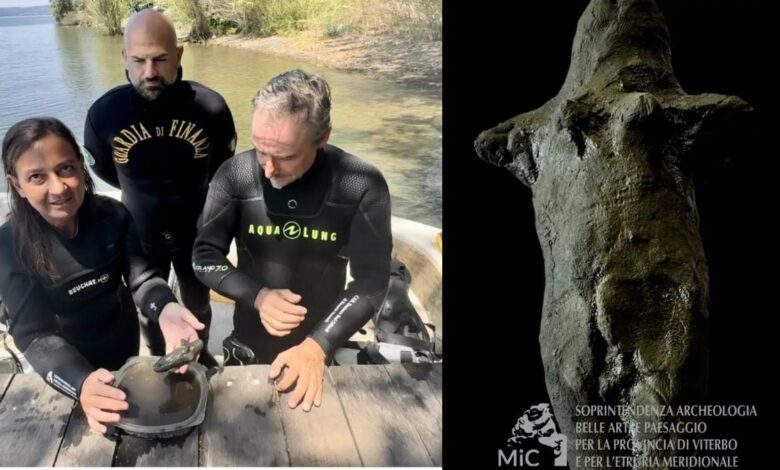3,000-year-old clay figurine with handprints found in Italy

Archaeologists have made a major discovery in Lake Bolsena in central Italy: a 3,000-year-old clay figurine believed to depict an ancient goddess. The artifact was found submerged in the volcanic lake, which contains the remains of an Early Iron Age village dating back to the 10th or 9th century BC. The figurine, which is about 15 centimeters (6 inches) tall, offers a rare glimpse into the early customs and daily life of this ancient civilization. The discovery includes handprints of the maker and imprints of a fabric pattern, suggesting the figurine was once dressed in a garment.
Archaeological context
The statue was excavated by a team of Italian government archaeologists and police divers at the Gran Carro site on the eastern shore of Lake Bolsena, according to a Facebook post. after by the Superintendency of Archaeology, Fine Arts and Landscape. The site, which sank into the lake due to seismic activity, has been a focus of archaeological research since the 1960s. Finds from the site include previous wooden objects, pottery and jewellery, which provide valuable insights into the organisation and culture of early Iron Age communities.
Significance of the find
The rough craftsmanship of the clay figure and the imprints of the cloth indicate that it was probably used in domestic rituals. Similar artifacts found in Iron Age graves suggest that such practices were widespread. This discovery is notable for the preservation of both the artist’s handprints and the garment imprint, which offers a unique insight into the ritual practices of the time.
Broader implications
Geologists have determined that Lake Bolsena was formed between 600,000 and 200,000 years ago. years ago during volcanic eruptions. The submerged village, possibly built by the Villanovan culture, a precursor to the Etruscan civilization, has yielded a wealth of artifacts that reveal much about life in the early Iron Age. The Gran Carro site is now part of Italy’s national recovery and resilience plan, which aims to improve the site’s accessibility for visitors and further research.
Ongoing exploration
In addition to the statuette, the site’s Aiola structure, a large pile of submerged stones, is thought to have been built near a geothermal spring. This find, along with other finds from the region, helps to reconstruct the historical significance of Lake Bolsena and the surrounding area through various periods, including the Roman period.
Follow Gadgets 360 for the latest tech news and reviews. X, Facebook, WhatsApp, Wires And Google News. For the latest videos on gadgets and technology, subscribe to our YouTube channel. If you want to know everything about top influencers, follow our in-house Who is that360 on Instagram And YouTube.

New Mpox strain reported in Sweden, first case outside Africa
Pixel 9 Pro, Pixel 9 Pro XL to offer LTPO display in India, but lack Wi-Fi 7 support



